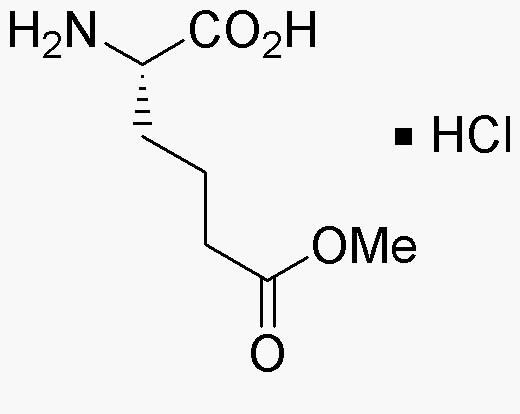L-a-Aminoadipic acid d-methyl ester hydrochloride is widely utilized in research focused on:
- Pharmaceutical Development: This compound serves as an important intermediate in the synthesis of various pharmaceuticals, particularly those targeting neurological disorders, enhancing drug efficacy and specificity.
- Biochemical Research: It is used in studies related to amino acid metabolism, providing insights into metabolic pathways and potential therapeutic targets for metabolic diseases.
- Polymer Chemistry: The compound can be incorporated into polymer formulations, improving the properties of biodegradable plastics, which are increasingly important in sustainable materials development.
- Food Industry: It has applications in food science as a flavoring agent or preservative, contributing to food safety and quality while offering a natural alternative to synthetic additives.
- Cosmetic Formulations: The compound is explored in cosmetic products for its potential skin benefits, such as moisturizing and anti-aging properties, appealing to the growing demand for effective skincare solutions.
Informations générales
Propriétés
Sécurité et réglementation
Applications
L-a-Aminoadipic acid d-methyl ester hydrochloride is widely utilized in research focused on:
- Pharmaceutical Development: This compound serves as an important intermediate in the synthesis of various pharmaceuticals, particularly those targeting neurological disorders, enhancing drug efficacy and specificity.
- Biochemical Research: It is used in studies related to amino acid metabolism, providing insights into metabolic pathways and potential therapeutic targets for metabolic diseases.
- Polymer Chemistry: The compound can be incorporated into polymer formulations, improving the properties of biodegradable plastics, which are increasingly important in sustainable materials development.
- Food Industry: It has applications in food science as a flavoring agent or preservative, contributing to food safety and quality while offering a natural alternative to synthetic additives.
- Cosmetic Formulations: The compound is explored in cosmetic products for its potential skin benefits, such as moisturizing and anti-aging properties, appealing to the growing demand for effective skincare solutions.
Documents
Fiches de données de sécurité (FDS)
La FDS fournit des informations de sécurité complètes sur la manipulation, le stockage et l’élimination du produit.
Spécifications du produit (PS)
Le PS fournit une description complète des propriétés du produit, notamment sa composition chimique, son état physique, sa pureté et les exigences de stockage. Il détaille également les plages de qualité acceptables et les applications prévues du produit.
Certificats d'analyse (COA)
Recherchez des certificats d'analyse (COA) en saisissant le numéro de lot du produit. Les numéros de lot et de lot se trouvent sur l'étiquette d'un produit, après les mots « Lot » ou « Lot de fabrication ».
Numéro de catalogue
Numéro de lot/série
Certificats d'origine (COO)
Ce certificat d'exploitation confirme le pays dans lequel le produit a été fabriqué, et détaille également les matériaux et composants utilisés et s'il est issu de sources naturelles, synthétiques ou autres sources spécifiques. Ce certificat peut être requis pour les douanes, le commerce et la conformité réglementaire.
Numéro de catalogue
Numéro de lot/série
Fiches de données de sécurité (FDS)
La FDS fournit des informations de sécurité complètes sur la manipulation, le stockage et l’élimination du produit.
DownloadSpécifications du produit (PS)
Le PS fournit une description complète des propriétés du produit, notamment sa composition chimique, son état physique, sa pureté et les exigences de stockage. Il détaille également les plages de qualité acceptables et les applications prévues du produit.
DownloadCertificats d'analyse (COA)
Recherchez des certificats d'analyse (COA) en saisissant le numéro de lot du produit. Les numéros de lot et de lot se trouvent sur l'étiquette d'un produit, après les mots « Lot » ou « Lot de fabrication ».
Numéro de catalogue
Numéro de lot/série
Certificats d'origine (COO)
Ce certificat d'exploitation confirme le pays dans lequel le produit a été fabriqué, et détaille également les matériaux et composants utilisés et s'il est issu de sources naturelles, synthétiques ou autres sources spécifiques. Ce certificat peut être requis pour les douanes, le commerce et la conformité réglementaire.


